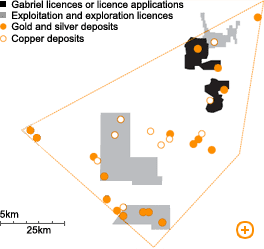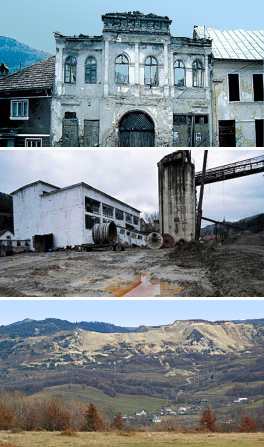Rosia Montana is a community of sixteen villages located in a district known as the Golden Quadrilateral, in the South Apuseni Mountains of Transylvania, Romania.
The Rosia Montana concession area, which affects just four of these villages, was subject to open pit mining by the state mining company, Minvest, until 2006 when state funded mining operations were required to close in the lead up to European Union accession. Following the closure of the mine with the loss of thousands of jobs, unemployment is reported to be over 80% in the region.
As a result of historical mining activities, abandoned waste dumps and tailings ponds scar the Rosia Montana area leaving an environmental legacy with high levels of metals including zinc, iron, arsenic, lead and cadmium currently discharged, untreated, into local streams, soils and water. In addition, around 7 km of non-continuous ancient mining works (galleries) have been identified from the 140km of underground workings, most of which date from modern times.
The ancient workings were mostly destroyed by mining during the communist regime and those that survived were left abandoned and decaying and have remained so since the cessation of mining in 2006.
Gabriel’s new mining plan proposed to preserve the area's cultural heritage where possible whilst also treating the harmful effluents as part of its normal operating procedures.
Key Facts of Rosia Montana Project

Above: Regional geology - 'The Golden Quadrilateral'

Above: Three images of the legacy from historic mining at Rosia Montana.


